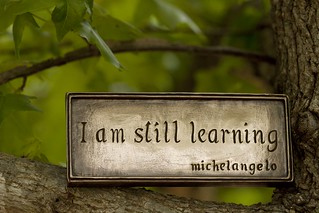Formative Feedback For Improving the Teaching and Learning Experience
Instead, I looked over the SEEQ results for recurring themes and looked back on any notes that I had made throughout the term. Based on these and discussions with colleagues I made some significant changes to the course.
It’s a very hands-on course in educational technology (ETAD 470) where students learn about the technical and pedagogical aspects of using blogs, wikis, podcasts, social bookmarking and other tools for teaching and learning. I realized that a multiple choice, matching, short answer and essay question type final exam probably wasn’t a great way of assessing what I wanted the students to be learning, so I dropped it and increased how much the practical projects were worth.

I also listened to the students feedback about how little value they saw in the mid-term project so I completely changed it to something they might actually have to do once teaching in a school system.
Finally, and this is really the key point of this post, I took the advice of my colleague, Kim West and implemented the use of formative feedback from the students. The class met on Tuesday and Thursdays and each Thursday I handed out a “two-minute memo” or other such slip of paper to try to gauge student understanding and concerns. On Tuesday I would go over the questions and points raised by the students on those slips (without using any names). Students had to option to leave off their names unless they had a personal note they wanted me to respond to, yet overwhelmingly students included their names, which I took as a sign of trust.
On one Thursday I forgot the slips in my office so quickly created a version using a Google Form. The students were happy with this different format so I stuck with it for the rest of the term. The responses from the students automatically ended up in a Google spreadsheet for me to easily review. I put the URL to the form on my last slide of the day and also emailed it to students (so I reached students who weren’t there that day). This would be a great way to do formative feedback in a large class as well because the collection of “data” would be automated.
I made it clear to the students at the start of the term that I had made changes based on comments from the previous year’s students and that I would be eliciting their feedback through these memos and the SEEQ for continuing changes in the class.
My impression was that the rapport in this class was far better than in the previous and this was confirmed when I received my SEEQ results. They made me feel all warm and fuzzy with comments about me as a teacher, which of course is great, but they spoke of the whole experience in the same way. They were invested in the course because A) they saw the practical assignments and activities as learning experiences that they would utilize beyond the end of the term and B) they had somewhat of a say in how the class evolved and in how it would be changed for future students.
Formative feedback like I used doesn’t have to be administered every week. It should be done as often as is appropriate to stay in touch with what your students are thinking about the learning experience (are they confused, can they hear you in the back of the room, do they love your use of examples, etc.). It should be done to find out what tweaks or larger changes you should make to your course. It should be done with an open mind. It should be done to shape the changes you think you need to make and make the teaching and learning experience better for everyone.
